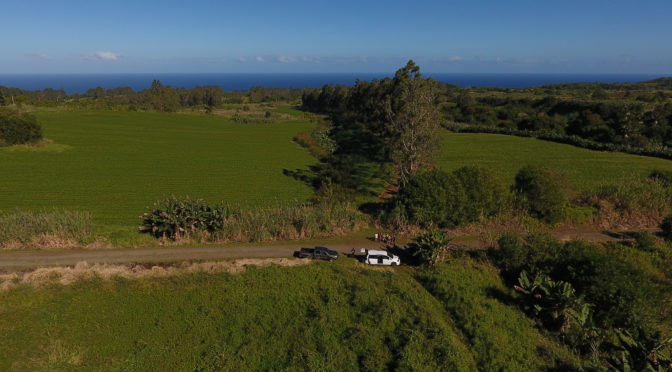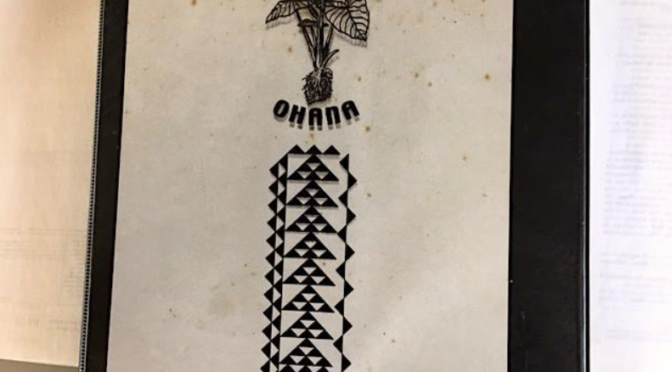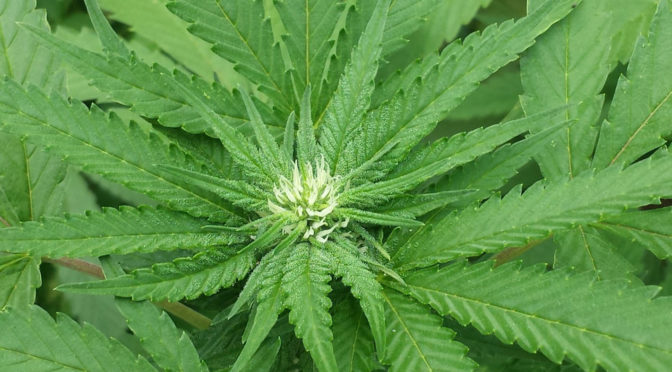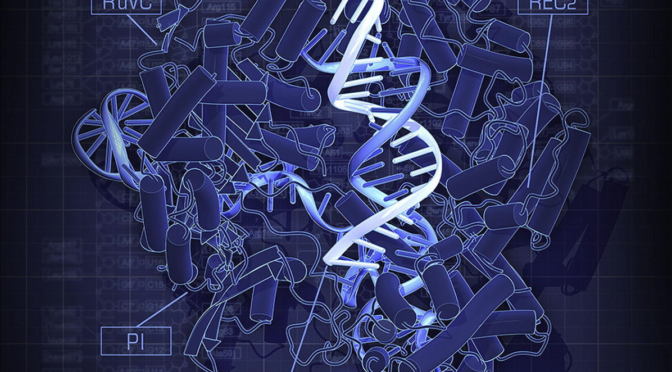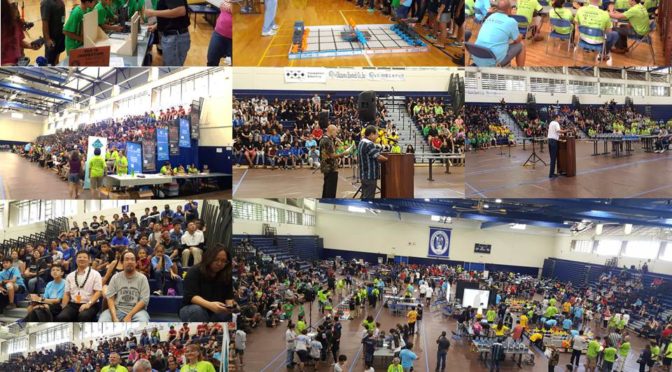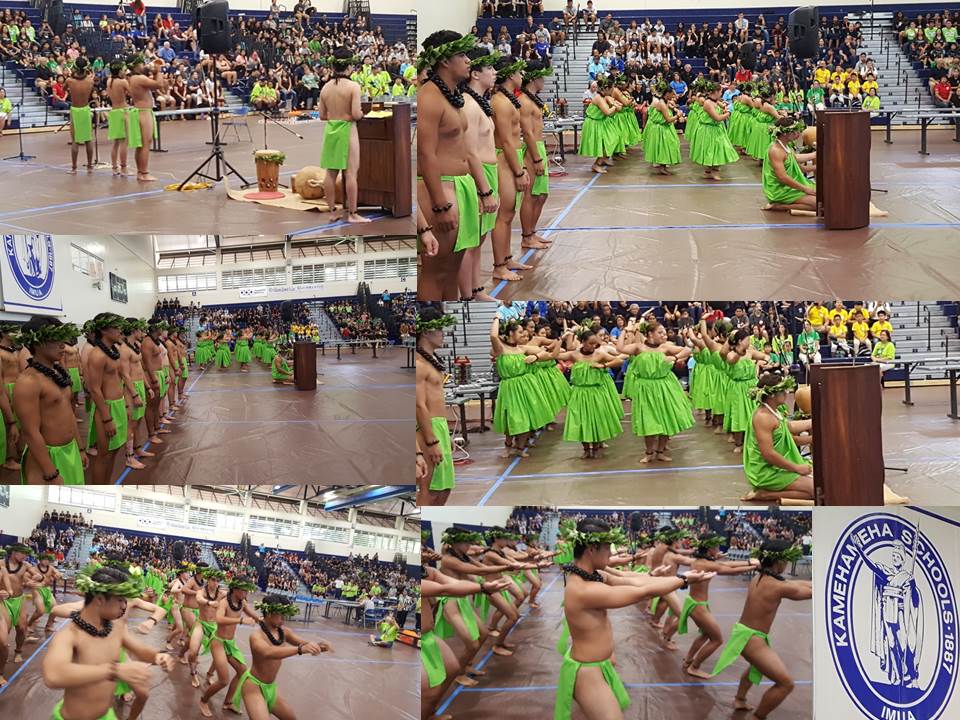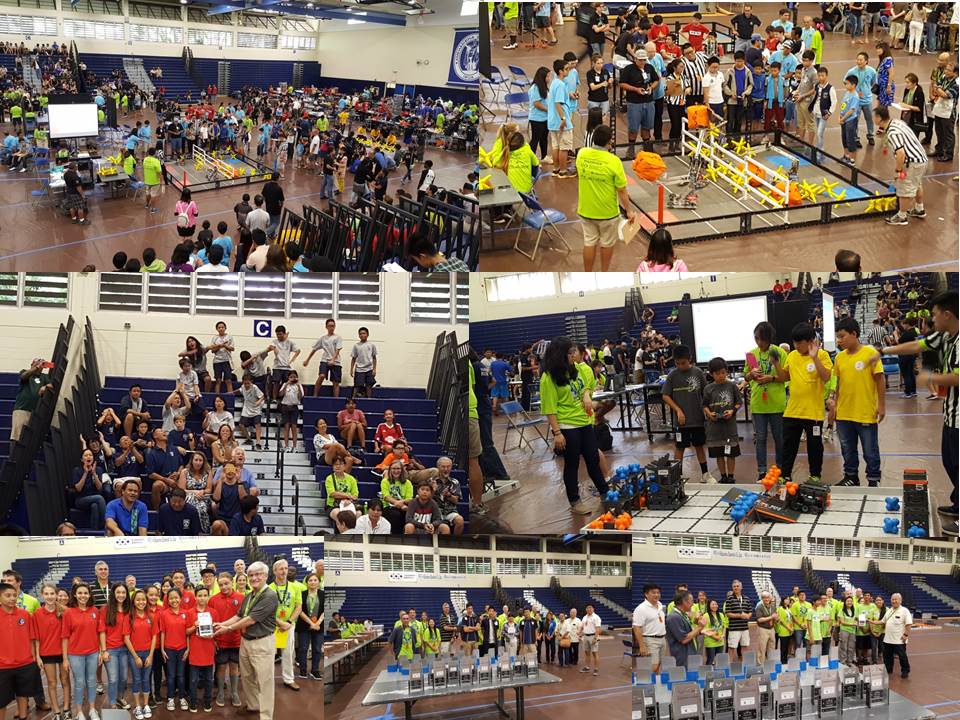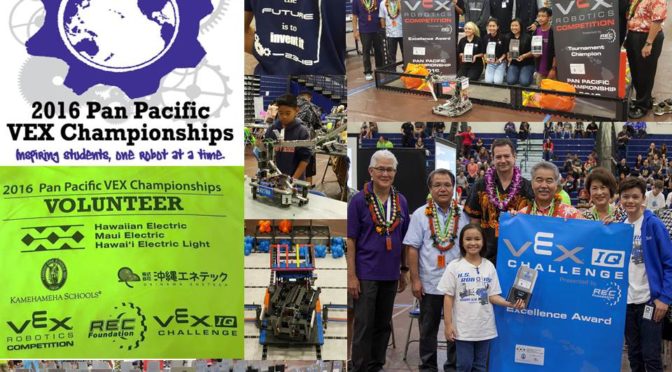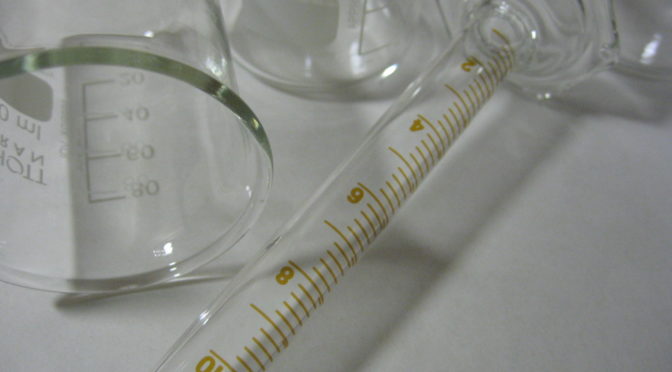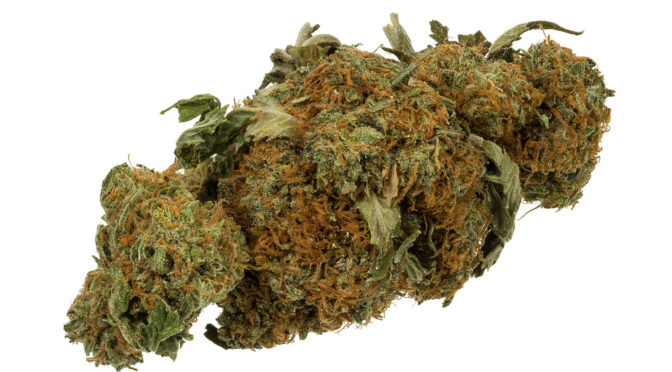All posts by Leslie Lang
Introducing Richard Ha’s New YouTube Channel
Precision Ag: MIT Students Use Drones to Analyze Soil Nutrient Load at Hamakua Springs
Richard was out with some Massachusetts Institute of Technology (MIT) students conducting precision ag research at his farm when their drone swooped by and snapped this.
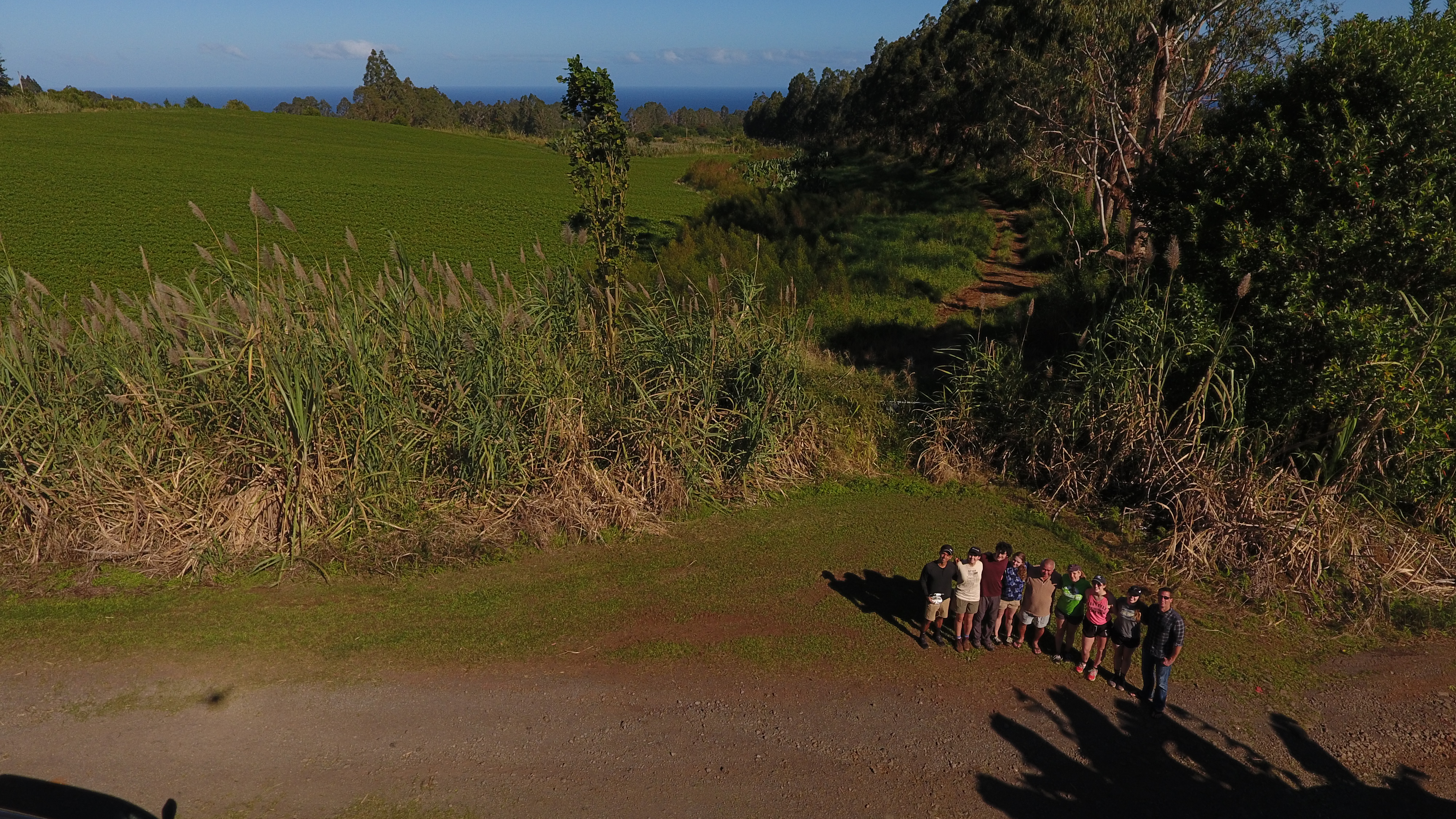
The undergraduate students are here with MIT’s Traveling Research Environmental Experiences (TREX) field research course. They are doing some environmental testing projects. At Hamakua Springs, their project is about “precision ag.”
‘Iolani School graduate Jon Kaneshiro is a graduate student in environmental engineering at MIT and a teaching assistant in the course. He explains they are using the drone to take remote images of the farm’s sweet potato fields. Then they process the images to analyze nutrient load.
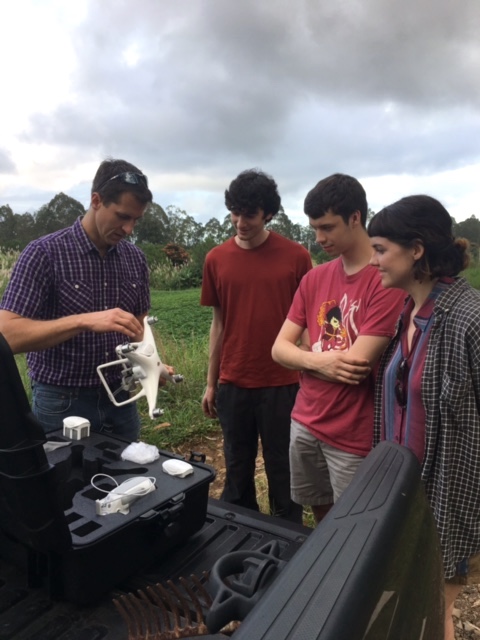
“Using these high-definition, high-resolution drone images,” he says, “we can do some cool coding and processing to create a mosaic of a farm. It lets us see where potential low nutrient points are; where the plants aren’t doing well in the field. Sometimes if you just look at the field everything looks green. But if you use different image processing techniques, you can see which places are not doing as well as other places.”
Some large-scale farms might be using the technology, but Kaneshiro hasn’t heard of any Hawai‘i farmers using it.
It means a farmer doesn’t have to rely on satellite images, where resolution is poor. Clouds, too, can block satellite views. “We have big data from satellites,” he says, “but the resolution is oftentimes not enough to analyze your own smaller field.”
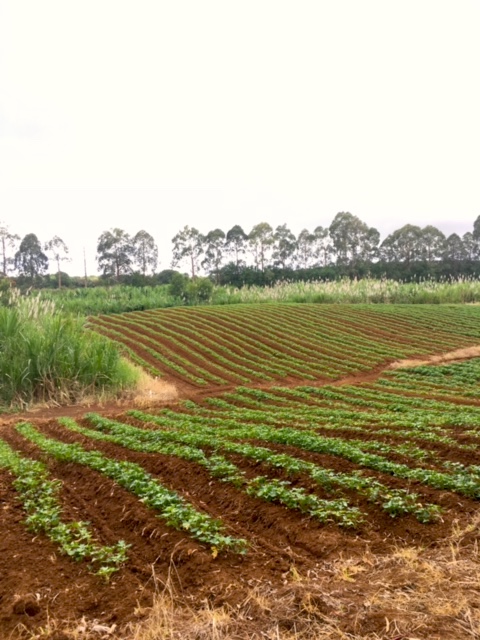
“Drones are pretty accessible,” he says. “They can cost a couple or a few thousand dollars. But if you hired a helicopter it’s going to be a thousand for only one ride. As compared to a drone, where you can go out with it every day. Or even multiple times in one day.”
The students are studying two different plots at Richard’s farm. One is 12-acres and the other is a four-acre plot of sweet potatoes.
Processing the Photos for Precision Ag
They process the raw images using applications and coding to isolate different types of bands, wavelengths, frequencies and the like. “We use software to code it,” says Kaneshiro, “but some of the students are really smart and doing it themselves, using coding and algorithms.”
“When you isolate the bands, you can see, visually, at a more intense level where there’s less growth in an area. You can see where the hot spots are.”
Once they find the “hot spots,” they test the soil at those places for pH and other nutrient levels.
“We can map the data onto the images and look at correlations and see what’s going on,” he says. “Why there are higher nutrients here, and where we need more nutrients.”
He says it’s a complex process but that it’s fun to see it all come together.
It’s merging remote sensing with precision ag, he explains. “The idea is that instead of a farmer dispersing large amounts of fertilizer over his whole field, maybe he can realize that, okay, that little 10 x 10 square in that corner over there needs more or less fertilizer, maybe because of a topographic feature.”
He says it’s a big divide. “We have the technology and the skills, but the divide between the farmers and the scientists is big.”
The students will be presenting about their project, as well as on sulfur dioxide sensors they have deployed in Pahala, at the Kona Science Cafe on Wednesday, January 25, 2017 at 5 p.m.. The public is welcome.
Kamahele Family, Part 3 – Uncle Sonny Kamahele
My Uncle Sonny Kamahele farmed at Maku‘u after some years in the Merchant Marines. His real name was Ulrich Kamahele (I have no idea where that name came from). He had a big personality.
One day, when I was walking with a couple of my buddies on Waianuenue Avenue near where Cronies is now, I heard someone call me. It was Uncle Sonny, and he was almost all the way up the block toward Kaikodo.
It’s hard to be rugged — even when you are in the 9th grade and smoking cigarettes — when your Uncle Sonny yells “Eh, Dicky Boy.” I cringed and looked around to see if any girls had heard him. He must have been in his 30s then.
I caught up with him again after I graduated from the University of Hawai‘i and returned home to run Pop’s chicken farm. When we decided to start growing bananas, we got lots of our banana keiki from Uncle Sonny. The Paradise Park subdivision had been built and so one could drive all the way down to Maku‘u. So we saw him quite frequently.
Uncle Sonny did not have electricity, running water or a telephone, but he had a transistor radio and a 1-foot stack of U.S. News and World Reports. He always got the current copy from the Pahoa post office. Though he lived a very simple life, he’d traveled all over the world with the Merchant Marines and he knew a lot more than one would think. He could talk about a myriad of subjects. I found his stories fascinating.
I visited him often and learned a lot about farming from him. A visit to Maku‘u would take hours, with most of that time spent listening to Uncle Sonny. I learned to be a good listener. He always talked in a loud voice and he waved his arms a lot. My wife June and my sister Lei told me that they would stay arms’ length from Uncle Sonny, walking backwards or in a big circle around the yard. They were careful to stay out of range of his swinging arms, so they wouldn’t be all bruised at the end of the visit.
Everyone knew Uncle Sonny for growing the sweetest watermelons. People would come from miles around to get his watermelons. He did not have to go out to sell them; they would all sell by word-of-mouth.
We spent a lot of time talking about farming watermelons. He used a backpack poison pump. Once he showed me how he knew that the amount of sticker/spreader in the mixture was effective. Although the rate was supposed to be something like ½-teaspoon per gallon, he always double-checked the mixture by sticking a piece of California Grass into it. Due to the fine hair on the grass, water normally runs off California grass, taking the herbicide with it. If the water spread on the leaf instead of running off it, the mixture was right.
What I learned from Sonny Kamahele
The message I learned: Use the book for the first approximation, and then confirm things on the ground. The word “grounded” does come to mind.
He told me that melon flies, an enemy of watermelon, rest under a leaf at the height of the midday sun. That was why he planted a few corn plants on the outside border of his watermelon patch. Sure enough, they were there. He was in tune with the behavior of the fruit fly. He would pull out his can of Raid and give them a short burst.
The standard solution would have been to spray the whole field. Uncle Sonny’s way was much more effective and very much cheaper.
Here’s how Uncle Sonny knew his watermelons were ready: When they reached the size of golf balls, he put a wooden stake with the date on it. Then he harvested the melons after a certain number of days went by.
It was so simple and so effective. It’s what led us to place a different colored ribbon on every banana bunch we bagged in a particular week. We harvested the bananas based on elapsed time—pretty much like Uncle Sonny did.
I learned from Uncle Sonny to use the “book” for general instructions. But not to rely on it exclusively.
Uncle Sonny broke things down to their essential components. He made his life simple, and yet he was very effective. I admired him very much.
See also:
Maku‘u Stories, Part 1: My Kamahele Family in Maku’u
Maku‘u Stories, Part 2: Frank Kamahele
M.D. Says Imported Hemp CBD Products Unregulated, Unsafe for Medicinal Use
Honolulu ophthalmologist Clifton Otto wants a ban on imported hemp CBD products – cannabidiols – being sold in Hawai‘i health food stores and smoke shops as “dietary supplements,” or at the very least have such products subjected to the same regulations that apply to other controlled substances.
“This is non-pharmaceutical grade CBD that is being extracted from the stalks, and sometimes even the flowers,” he says, “of hemp strains (THC of 0.3 percent or less) that are being grown in other countries and other states that allow this activity.”
He says they are being classified as “dietary supplements” because a product labeled with a medical use is considered a new drug and has to go through Food and Drug Administration approval process.
“The problem is that CBD is not a dietary supplement,” he says. “It’s a chemical that’s being used exclusively for medical purposes to treat seizure and arthritis inflammation and even cancer.”
Why is he concerned? Because the hemp is not being produced for medical use, he explains, it’s not undergoing the manufacturing practices all drugs go through. He says medical patients are using something that’s untested and of unknown purity. He adds it could also contain contaminants we don’t know about.
In addition, he talks about some 2007 medical studies done with CBD in simulated gastric environments. “They found that CBD can be turned into not only tetrahydrocannabinol (THC), but some other metabolites as well,” he says.
“They’re proposing this might be part of the reason why children, these medical refugees who are going to Colorado to gain access to hemp CBD, are having unusual reactions. Because some of the CBD is being converted into THC in their stomachs, which is making them tired and disoriented and can sometimes stimulate seizure activity. That’s something I don’t think people are that aware of yet.”
He says he recently heard about someone who failed a pre-employment drug screening test because he tested positive for THC. The applicant told the doctor he’d only used hemp CBD products.
Richard and Jaclyn Moore, who is a pharmacist on Lau Ola’s team, visited with Honolulu ophthalmologist Clifton Otto the other day. “He’s a passionate proponent for patient’s rights,” says Richard.
Research and Law
Otto’s interest in medical marijuana began a few years back when a family friend used it while undergoing treatment for colon cancer.
He says his first exposure to medical marijuana was a real eye-opener.
“I realized if my friend hadn’t been using marijuana during the chemotherapy before and after surgery, he probably would’ve lost a lot of weight and developed secondary infections. And he probably would have died from that before he died from the cancer.
“I started doing some research online,” he says, “reading some of the peer-reviewed articles, and it’s just amazing how much information is available. Even how much research was done back in the ’70s before this was all shut down by the war on drugs.”
Then, he says, he started looking at the law.
“That’s when I started to become a patient advocate. I just couldn’t believe how our patients were being treated in terms of lack of access and being harassed by law enforcement.”
It led him to look into the “scheduling” of marijuana at the state and federal levels. That, he says, is the crux of the problem.
CBD is a Schedule 1 controlled substance:
Schedule I drugs, substances, or chemicals are defined as drugs with no currently accepted medical use and a high potential for abuse. Some examples of Schedule I drugs are:
heroin, lysergic acid diethylamide (LSD), marijuana (cannabis), 3,4-methylenedioxymethamphetamine (ecstasy), methaqualone, and peyote
Marijuana is illegal on a federal level. But medical marijuana is legal in the state of Hawai‘i. The federal government is not currently enforcing its law. Otto says that’s what led to the importation of unregulated hemp-based “dietary supplements.”
Bigger Picture
He is not against medical marijuana, and in fact provides patients with written certification to obtain it. He just wants to know that what’s out there, used medicinally, is safe.
“One of the reasons I’m interested in this is because of this whole potential for being able to produce a locally sustainable health care system for Hawaii. I believe cannabis can be a centerpiece of that because of all its medical benefits,” he says.
“I think this hemp CBD products issue is important because it points out the opportunity the state has to benefit from the purely intra-state production of cannabinoids. We could have cancer patients coming from all over the world to be administered CBD at high doses for anti-cancer treatment.
“I’m not sure that the state realizes that about the potential yet, ” he says, “because of how biased we are towards federal law and the federal policy towards marijuana.”
He has spoken to the state Public Safety Department (PSD), which issues controlled substance certificates to doctors, about his concerns over hemp CBD products as “dietary supplements.” Someone there recommended he contact the governor’s office directly, which he did about four months ago. He hasn’t heard back yet.
“I asked PSD to offer a rescheduling recommendation, because PSD has the authority to make scheduling recommendations to the legislature every year when we match up our state-controlled substance acts with the federal-controlled substance acts. They wrote back to me and said, ‘Actually, we’re not going to do that because we are following the federal schedule.’”
Someone there recommended he contact the governor’s office directly, which he just did. He hasn’t heard back yet.
“We just don’t know if it’s safe,” he says. “It’s certainly not being used as intended.”
photo: Clifton Otto
CRISPR-cas9: Jennifer Doudna is a Role Model
U.S. patent judges have started hearing a case about who will hold the patent on the gene editing technology called CRISPR-cas9.
One of the main players is Dr. Jennifer Doudna, a scientist affiliated with the University of California at Berkeley.
I’ve written about Jennifer Doudna here before. She grew up in Hilo and graduated from Hilo High. What a great role model she is for our kids. We need to nurture our young people here to learn and reach for the stars (or the genes), as she has done. Not, no can. CAN!
“The stakes are enormous,” Anette Breindl, senior science editor at the trade journal BioWorld, told NPR about the patent case. She said three companies built around those patents “already have a billion dollars of investment behind them, and a fourth company has a stake in the technology that could be worth $2 billion.
From NPR’s All Things Considered:
The high-stakes fight over who invented a technology that could revolutionize medicine and agriculture heads to a courtroom Tuesday….
“This is arguably the biggest biotechnology breakthrough in the past 30 or 40 years, and controlling who owns the foundational intellectual property behind that is consequentially pretty important,” says Jacob Sherkow, a professor at the New York Law College.
The CRISPR-cas9 technology allows scientists to make precise edits in DNA, and that ability could lead to whole new medical therapies, research tools and even new crop varieties.
…On one side of the dispute are research collaborators Jennifer Doudna at the University of California, Berkeley and her European colleague Emmanuelle Charpentier (currently at the Max Planck Institute for Infection Biology in Berlin).
“When they filed their patent application [in 2012], they did a great job disclosing how to use CRISPR for bacteria, but were a little lighter on details about how to use CRISPR in the cells of higher organisms” such as human cells, [Jacob Sherkow, a professor at the New York Law College] says.
“Later in 2012, Feng Zhang at the Broad Institute at MIT and Harvard files his patent application that gives a pretty detailed description about how to use CRISPR in the cells of higher organisms,” Sherkow continues.
And since the most important use of the technology is its ability to edit DNA in higher organisms, the real battle is over who can claim that invention.
Photo by Hiroshi Nishimasu, F. Ann Ran, Patrick D. Hsu, Silvana Konermann, Soraya I. Shehata, Naoshi Dohmae, Ryuichiro Ishitani, Feng Zhang, and Osamu Nureki [CC BY-SA 3.0 (http://creativecommons.org/licenses/by-sa/3.0)], via Wikimedia Commons
Hawaii Robotics: ‘Kids Don’t Want To Go Home!’
Art Kimura, who’s been called Hawai‘i’s “Father of Robotics,” has a lot of enthusiasm for promoting Hawaii Robotics programs in our schools.
We talked to him about what sorts of careers Robotics sometimes leads children toward, the exciting state and world championships the kids compete in, and what’s going on with access to the programs.
This is the second part of a two-part series on the subject. Read Part 1 here.
Q. What do children learn from Robotics, and what sort of careers are those skills useful in?
Art Kimura: It definitely leans toward engineering and computer science. Those are the two high-level occupations that we’ve seen many kids strive for as a result of Robotics. I think one real strong piece of evidence, although it’s never been studied well enough to say this is definitely it, is that the University of Hawai‘i College of Engineering enrollment has nearly doubled since Robotics started.
Nobody’s done a study on it but we kind of see the linkage because if you interview the students there, many of them say, “Yeah, I was on this Robotics team or that Robotics team.”
It’s also well documented that many girls will say, “I’m an engineer because of Robotics.” In other words, they never thought of it until they joined the Robotics team and then the light bulb went on. “Hey, I can do this.”
Tell me about the Pan Pacific VEX Championships that were just held here.
We were in the Kamehameha Schools gym and we had 88 teams playing and hundreds of parents and other supporters. It was an awesome ‘ohana of Kamehameha faculty and students who provided the venue and services, from the opening 60-plus dancers who showcased Hawai‘i’s culture to the concluding final matches on Sunday.
The place was so loud with the parents cheering and the music blaring out and excited MCs calling the matches, students dancing in the stands. You could hardly hear each other talking, even if you were sitting next to each other. It was just like a sporting event.
Is it an annual championship?
We used to have it annually and then we stopped for a couple of years for different reasons. The reason this was reignited is we had a discussion at Hawaiian Electric Company.
Hawaiian Electric has a partnership with Okinawa Enetech, which is the utility on Okinawa. They’re trying to learn from each other. The Okinawans were interested in what Hawai‘i Electric does in Hawai‘i in terms of STEM education.
Hawai‘i Electric has been long-time supporters of STEM education. They give money to support science fairs, they give money for many different causes in terms of STEM, and they’ve become a strong supporter of Robotics. Twenty years ago, they supported Waialua and they’re still supporting them today. They’re our title sponsor of our state VEX championship, so they have contributed not only funds but their volunteers also come out and support the tournament.
In that discussion we had with Hawaiian Electric, and because of their partnership with Okinawa Enetech, we thought we would bring back the Pan Pacific Championship as a means of trying to get this tournament held not only in Hawai‘i but also in other countries. The vision is this tournament that we just hosted will rotate to other countries, like an Olympic-style event, where it could be in China or it could be in Taiwan (but all in the Pacific Rim because that’s what our focus is).
By having teams come here, our kids can participate in an international competition and see how they measure up. A few years ago when we hosted it at the Hawai‘i Convention Center, we grew the tournament into the second largest tournament in the world. One hundred and twelve teams. We still consistently get 20 teams from China coming to that. China has thousands of VEX Robotics teams, probably approaching 5 or 6 thousand now.
We have some sub-issues going on where we’re hoping this tournament will catalyze Okinawa. Right now, Okinawa has no VEX Robotics program because they have their own program. We’re trying to see if we can get into their system with this program and sort of selfishly, we would like our teachers here, who are really experts in this area, to be the trainers; to send them there to train the Okinawans.
We also had representatives from three Department of Defense schools, from Korea and Okinawa, at our tournament to see whether they can include that in the Department of Defense schools in Korea, Japan, the Philippines and other entities around the Pacific. Again, with our goal being our teachers will become the trainers.
We work very closely with the Robotics Education and Competition Foundation. They’re a non-profit and they organize all these VEX tournaments worldwide. Their president was the one who helped start our program back 20 years ago. He brought his team to Hawai‘i and helped us start.
Anyway, he offered us two world championship slots for our Pan Pacific Championship, so two teams would qualify for next April’s World VEX Championships in Louisville, Kentucky. We’re first in the world to qualify two teams.
Has Hawai‘i Robotics gone to the world championships before?
We went to that championship this past year with 31 of our Hawai‘i teams and it was absolutely amazing. The facility’s so large. Literally, I was walking 10 to 12 miles a day inside the building just to go visit the teams.
There will be probably about 25,000 people cheering on the kids next year and probably 1,000 teams competing from all over the world.
How did Hawai‘i do last year?
We do really well, but we don’t win the championship. It’s just difficult to get to that level, but our teams win trophies, they finish high. We’re proud of them when they do that. Several came home with trophies.
What’s coming up this year?
This year we have two different games. One game is called Starstruck. It’s a fun game where these stars get thrown back and forth across the field, these bean bags get thrown back and forth, and at the end of the game the robot climbs a pole.
The state high school championship, for the very first time, is going to be held here on the Big Island on January 5th at Kea‘au High School. It’s the start of some two dozen more IQ and VRC Robotics tournaments statewide. The VEX middle school state championship will be held at the new Stevenson Middle School STEM center on January 7, and the VEX IQ state championships for elementary and middle school will be held February 20 at the Hawai‘i Convention Center.
Robotics is something you don’t get until you see it, really. You don’t feel what the kids feel until you actually go to a tournament and see the excitement.
It’s really exciting. It’s the value of having fun while you’re learning. And when you ask the kids what they like about it, they come up with all kind of different reasons about what it’s teaching them.
What are the challenges?
One of our big challenges right now is access. Less than five percent of kids in Hawai‘i have access to participating on a Robotics team.
Representative Mark Nakashima really helped us this past year with legislation he got passed by the legislature. Several years ago, he sent money to the Department of Labor and initially they focused on things like agriculture. This past year, the Labor people contacted us about IT. In other words, how do you get more kids interested in IT kind of stuff?
We got access to that funding, and because of that we were able to increase statewide participation in VEX IQ 55 percent in a single year.
That kind of infusion of money really helps because I can go to a school and say, find me a mentor and we’ll provide all the resources for you.
It’s not a huge investment. Offering Konawaena Elementary three Robotics kits and a game field, the value is probably about $1,700. We’ve got 55 kids involved there. And everything is reusable except the new game, because every April a new game is announced. As far as the kit, though, you can use it year after year. Once you get the initial parts in the schools, they can sustain it on their own.
Why should people encourage their kids to get involved with Robotics?
It goes back to having kids learning life skills through this process. I think it’s a wonderful way – it engages them and it’s real to the students.
One major complaint I get from teachers about Robotics all the time is the kids don’t want to go home. It motivates them to do something on their own. It’s nothing that they’re forced to do and they don’t get graded on it. They do it as a club activity most of the time.
You never know, the experience could change their life. They never thought of engineering, they never thought of programming, but all of the sudden, the light bulb goes on and there it is.
Hawaii Robotics Teaches More Than Just Building Robots
Hawaii robotics enthusiast Art Kimura is the “Father of Robotics” in Hawai‘i. More officially, he’s Education Specialist at the University of Hawai‘i’s Hawai‘i Space Grant Consortium.
Hundreds of Big Island children, from elementary through high school, participate in Robotics. We talked to him about what exactly Robotics is, how it got started in Hawai‘i, and all the skills – some of them rather unexpected – that children learn from participating.
This is the first post of a two-part series.
Hamakua Springs: How would you describe Robotics to someone who isn’t familiar with it?
Art Kimura: When I talk to parents, I talk more about Robotics as a tool to teach students life skills. The life skills we try to impart are team work, problem solving, time management, communication and integrity.
To me, those are the most important things to get out of Robotics because they are applicable whether you become an engineer or in any other job you pursue in the future.
Robotics has grown enormously over the last 20 years because of two factors: First, the planners took advantage of what society values. What does society value the most, that gets the most media attention, gets the most money? It’s sports and entertainment. Robotics took advantage of that. It created sports-like games and at the tournaments they play music and have loud MCs.
And I really think Robotics is a social experience as well. Parents often ask me, “What kind of kit should I buy?” I tell them, “Don’t buy a Robotics kit for your child because they’ll get bored with it at home by themself.” It really is a social experience where having a group of people who can work together seems to energize them.
How long have you been involved with Robotics?
The origin was a meeting in Hilo, just sort of a chance meeting when what’s now known as the ‘Imiloa Astronomy Center was being conceived of. Because it was Senator Inouye’s money that was being sent through NASA, NASA sent a representative to the first meeting. I was walking around with my plate looking for some place to sit and there was a man sitting by himself. I sat down with him.
Turned out that he was an engineer from NASA who headed the National Robotics Alliance, and he started to tell me about the programs he was helping to run in the San Jose, San Francisco area. He gave me chicken skin because he was talking about taking gang kids off the street and turning them into kids that would go to UC Berkeley and other colleges.
At the time, we didn’t have any formal scholastic Robotics in Hawai‘i. He had come to Hawai‘i with a scholarship to fund one team to participate in a program called FIRST Robotics, and the value was about $4,000. He had offered the scholarship to the DOE, who would be assigning it to a school. Turns out that school became Waialua High School. They have one of the premier Robotics programs in the world right now – not just in Hawai‘i or the nation, but in the world.
Tell me more about what’s happening there at Waialua on O’ahu.
It’s Waialua High and Intermediate, a grade 8-12 school. They’re just an amazing operation in a small sugar plantation town, a lot of immigrant kids, and yet because of the vision of a teacher out there, over the past 20 years it’s grown into a program where they’re in the so-called Robotics Hall of Fame. They travel extensively to the Mainland. They went to China and Korea this year and they’re going to Japan next year.
Is Robotics as big in the rest of Hawai‘i?
In Hawai‘i, our history is that we were able to grow things very rapidly, to a very high level. But because our population is limited, then eventually we get outpaced.
For example, there’s a program I brought to Hawai‘i called Botball. It’s probably one of the hardest programs because the kids have to program the robot, build the robot and then program it to operate autonomously during the entire match. There’s no human control, so it’s high-level programming that they have to learn. It’s a pretty expensive program.
We grew it in Hawai‘i to the largest in the world. At one time there were 42 teams. In the world there were like 300, and we had 42 of them. We were bigger than New York or California. Twice we hosted the world championship in Hawai‘i because we had so many teams.
Botball has kind of tapered down now to maybe only 10 teams, though, because of the cost. I think even more than the cost is the difficulty of doing it. You need to find a mentor that can teach kids how to program at very high levels.
How many kids are involved with Robotics on the Big Island?
I’m just guessing, but I would say about 700 to 800 kids in elementary, middle and high school, both boys and girls. We have some all-girl teams. There’s a Girl Scout team in Kea‘au that has three teams right now. It’s Troop 254.
Is there a certain type of child who is especially interested in Robotics, or does very well in Robotics?
I think it takes different types of people to have a successful team. You have some that like to do the mechanical part of building, and you have some that focus on the programming side. You need the cheerleader type. There are some kids on the team, they just want to belong to an organization but they’re not athletes, and so they join the team and they become the rah-rah people. They organize different aspects of it, like the documentation. There’s room for everybody on a team, depending on how the team is organized.
What are the other Robotics programs here in Hawai‘i?
There are nine programs right now. We have a program called FIRST LEGO League, a very big program. That’s an elementary and middle school program and it’s well-known at many schools. I think they must have about 140 or 150 teams in Hawai‘i.
There’s also FIRST Tech Challenge and FIRST. FIRST Tech Challenge is for middle and high school kids
FIRST is a large robot that the kids build from scratch, about 125 pounds, and they play in a sporting-like environment. The name FIRST stands for “For Inspiration of Science and Technology” and it’s a well-known program nationally. We have about 27 teams in Hawai‘i that play in that program. It’s very expensive. The entry fee alone is about $6000. The initial outlay is about $10,000 per team. But the kids learn a lot.
Where does that money come from?
They fundraise. Waialua is a good example. The reason I send a lot of people out there to visit is that yeah, they make good robots, but their business plan is just amazing. They raise about $150,000, $160,000 a year to support their program. It’s just a well-orchestrated business plan – how to solicit sponsors, and more importantly, how to retain a sponsor.
So they are learning incredible business skills, too.
Yes. Out of maybe 35 kids, probably only 10 build robots. The others are doing media things. They maintain the website, they document everything. They’re trained in how to solicit sponsors, to thank sponsors for their sponsorship level. It not only sustains itself but increases oftentimes. They write grants. It’s just an amazing operation they have out there.
Are any Big Island schools operating at that level?
They can’t match that here. It’s because of the way the lead teacher at Waialua organized it. He sees the bigger picture.
Most of our schools in Hawai‘i struggle financially and not only that, they also have limited space. If they are able to get a room, they’re lucky. Most of them are working out of part of a classroom. Waialua has six rooms dedicated just for Robotics. It’s because, again, the vision is much broader.
It sounds like we need more of that vision here on the Big Island.
Absolutely, yeah. It’s difficult because teachers are so busy in their day-to-day work that to come up with what Waialua is doing is very difficult. You have to be kind of a skilled grant writer, but it’s possible.
To me, that’s the high bar. You always want to look at that, even if you can’t replicate it identically. There are parts of it I think we can all learn from.
What are the other Robotics programs?
There are two versions of underwater Robotics in Hawai‘i. They run them in swimming pools. Good program, not very big. Primarily, I think, because from the audience side, it’s difficult to get people excited because it’s hard to imagine what’s going on underwater.
I focus more on a program called VEX Robotics because, to me, it’s much more sustainable and expandable. That’s the one we just had the tournament for in Honolulu.
We have over 300 VEX Robotics teams now in Hawai‘i. We’re in about 35 percent of the schools. On the Big Island alone we have 53 teams, so we have one-fourth of the total participants in the state right now. It’s grown enormously on this island.
What are the challenges with Robotics?
Part of the big challenge in Robotics for several years has been access. There are so many kids that are interested but because of various reasons, the opportunity to participate is very limited. A school can say, We have a Robotics program. When you ask, Well, how many kids? They say, Well, we have a FIRST LEGO League team – which is limited to 10 kids.
That means it could be 10 kids out of 500, and usually the school will go through a selection process. My concern always is the average student often is left out because they take the gifted and talented to represent the school.
With IQ (one of the VEX programs) what’s good is there’s no limit on the number of students or the number of teams you can have per school. Some schools have six teams and they may have 20 or 30 kids registered. I was at Konawaena Elementary two weeks ago to visit, and I was really stunned because there were like 55 kids there with six teachers. It’s very unusual for that many teachers to be involved. It’s amazing.
The demand is there and access is what we’re trying to deal with.
Part Four: Strong Medical Cannabis Research Happening in Israel
When it comes to cutting-edge medical cannabis research, Israel is the hot spot.
Recreational marijuana is illegal in Israel, but the Israeli government encourages the use of cannabis therapeutically. The Ministry of Health there oversees the growing and distribution of medical marijuana.
Last year, doctors in Israel prescribed medical marijuana to about 25,000 patients with cancer, degenerative diseases, epilepsy, and post-traumatic stress.
The big push on medical cannabis research in Israel right now? A purified form of cannabis that can be administered in precise doses and with minimal side-effects.
Federal law here in the U.S. makes it difficult for scientists to study the plant and its medicinal potential. Israel, though, doesn’t have the same restrictions. And unlike in other countries, human clinical trials on medical cannabis are allowed in Israel.
In fact, an Israeli biochemist is the world’s pioneer and foremost expert on medical marijuana research. In the 1960s, Raphael Mechoulam determined the structure of cannabis’s component cannabidiol (CBD). He also isolated tetrahydrocannabinol (THC) for the first time.
He also identified the brain’s first endogenous cannabinoid and found a compound in the body that activates cannabinoid receptors. Although he retired years ago, the octagenarian still goes to work to conduct his medical marijuana research.
Working Together
American and Canadian pharmaceutical companies, tobacco companies, and producers work with Israel researchers and organizations. Even the U.S. National Institutes of Health (NIH) funds research in Israel. The NIH has helped fund Mechoulam’s medical cannabis research for almost 50 years.
The Hebrew Unversity of Jerusalem recently opened a cannabis research center. There are now 20 such research centers in Israel. And this year, Tel Aviv hosted the second annual international conference on medical cannabis, CannaTech.
Watch The Scientist (1:02), a documentary about Dr. Mechoulam.
“The Scientist” is a documentary that traces the story of Dr. Mechoulam from his early days……as a child of the Holocaust in Bulgaria, through his immigration to Israel, and his career as the chief investigator into the chemistry and biology of the world’s most misunderstood plant. Dr. Mechoulam ascertained that THC interacts with the largest receptor system in the human body, the endocannabinoid system (ECS).
Also in this series:
Part 1: The History of Cannabis
Part 2: How Cannabis Works
Part 3: Who Takes Medical Marijuana?
Part Three: Who Takes Medical Marijuana?
Cannabis has a long history of easing medical symptoms or conditions. The cannabinoids within cannabis have analgesic and anti-inflammatory effects.
Who takes medical marijuana? People trying to treat a great number of conditions.
They take it in various ways: as edibles, in capsules, as a lozenge, dermal patch, oral or dermal spray, in a liquid tincture, or by vaporizing or smoking dried buds.
In some countries, including the U.S., there are also synthetic cannabinoids available by prescription. These include Marinol (Dronabinol) and Cesamet (Nabilone).
Seizure Disorder
Dr. Jim Berg, of Hilo, talks about the now-famous case of a little girl in Colorado named Charlotte. The toddler, who had a severe form of epilepsy called Dravet Syndrome, was having 300 grand mal seizures a week.
Doctors tried every possible medication, but none helped. Finally, when she was five, her desperate parents Paige and Matt tried medical cannabis.
From CNN:
Paige found a Denver dispensary that had a small amount of a type of marijuana called R4, said to be low in THC and high in CBD. She paid about $800 for 2 ounces – all that was available – and had a friend extract the oil.
She had the oil tested at a lab and started Charlotte out on a small dose.
“We were pioneering the whole thing; we were guinea pigging Charlotte,” Paige said. “This is a federally illegal substance. I was terrified to be honest with you.”
But the results were stunning.
“When she didn’t have those three, four seizures that first hour, that was the first sign,” Paige recalled. “And I thought well, ‘Let’s go another hour, this has got to be a fluke.’ “
The seizures stopped for another hour. And for the following seven days.
“It was extremely low in THC and very high in CBD,” says Berg. He says this was key. “With that ratio, you can take it in much higher doses, much more therapeutically. You would never be able to do that with high THC because you would get too stoned from it.”
Like CBD, the cannabinoid CBG is not psychoactive. “It seems to have very strong anticancer properties,” says Berg. “There’s a lot of hope regarding various cancers including brain stem tumors, breast cancer, and prostate cancer. There’s been a series of studies done on those specifically for CBG.”
Medical Marijuana in Hawai‘i
In Hawai‘i, medical use of marijuana is permitted for “alleviating the symptoms or effects of a qualifying patient’s debilitating medical condition.”
Hawaii Senate Bill 862 defines debilitating medical conditions as:
Cancer, glaucoma, positive status for human immunodeficiency virus, acquired immune deficiency syndrome, or the treatment of these conditions;
A chronic or debilitating disease or medical condition or its treatment that produces one or more of the following: cachexia or wasting syndrome; severe pain; severe nausea; seizures, including those characteristic of epilepsy; or severe and persistent muscle spasms, including those characteristic of multiple sclerosis; or
Any other medical condition approved by the department of health pursuant to administrative rules in response to a request from a physician or qualifying patient.
“And it also looks like CBD is probably going to be good for things like Alzheimer’s disease and for Parkinson’s Disease,” says Berg. “We’ve had many studies showing that it’s helpful. It’s probably both related to its pain-relieving qualities but especially its neuroprotective qualities.
“It seems to help the nervous system function better, both in the big picture of working between the structures in the nervous system in the brain and at a very local level both, in the peripheral nerves.”
Next week, a look at state-of-the-art medical cannabis research in Israel.
Also in this series:

